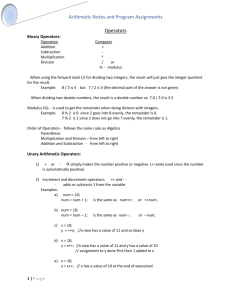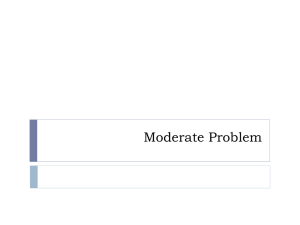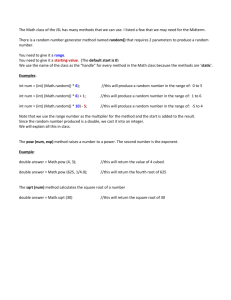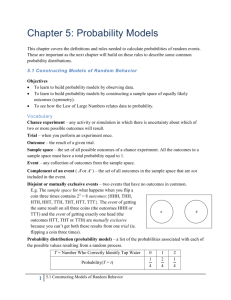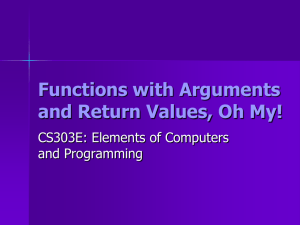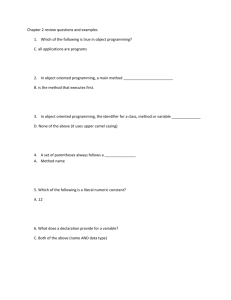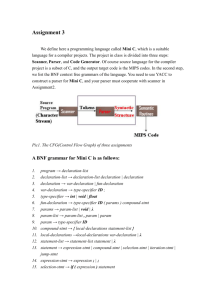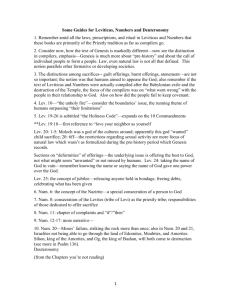if-then-else
advertisement
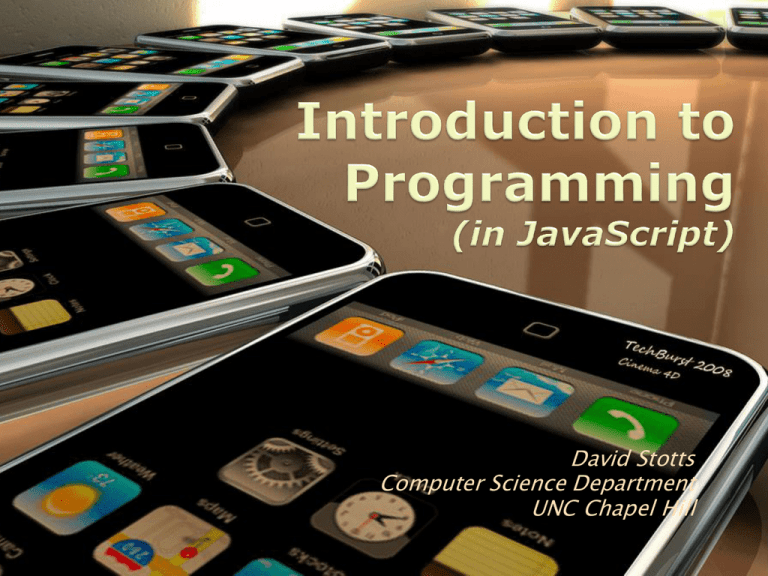
David Stotts
Computer Science Department
UNC Chapel Hill
Two roads diverged in a yellow wood,
And sorry I could not travel both
And be one traveler, long I stood
And looked down one as far as I could
To where it bent in the undergrowth
And both that morning equally lay
In leaves no step had trodden black.
Oh, I kept the first for another day!
Yet knowing how way leads on to way,
I doubted if I should ever come back.
The Road Less Traveled
Robert Frost
Then took the other, as just as fair,
And having perhaps the better claim,
Because it was grassy and wanted wear;
Though as for that the passing there
Had worn them really about the same,
I shall be telling this with a sigh
Somewhere ages and ages hence:
Two roads diverged in a wood, and I—
I took the one less traveled by,
And that has made all the difference.
0. data (types, simple information)
1. data storage (variables, assignment)
2. data retrieval (expressions, evaluation)
3. repetition (loops)
4. decision making (conditionals)
5. procedure abstraction (functions)
6. data abstraction (arrays)
7. objects: all-the-above, wrapped up
Decision Making (conditional statements)
Often we wish to choose to follow one
execution path or another, but not both
The decision of which way to go is based on
some condition being true, or false
Famous conditionals:
“If the glove doesn’t fit, you must acquit“
“One if by land, two if by sea”
If you come to a fork in the
road, take it
Yogi Berra
(supposedly)
Self referential
Conditional about conditionals
(we love this sort of thing)
What...is the airspeed velocity of an
unladen swallow?
If answer is correct
then you cross
otherwise you get tossed
the fork in the road
two roads diverge… long you stand, look
down one, … take the other
Collections of statements in JavaScript can be
grouped in “curly braces” { …. } called a block
Loop body is a statement block, in { …. }
Conditional has a statement block for each
“tine on the fork”…
“if-then-else” statement : two tined fork, a
block for “then” and another block for “else”
one block will be executed and the other block
skipped… like in the following flow chart
Control flow of conditionals can be thought
of with flow charts
yes
no
correct ?
“then” block
You
cross
Both paths move on
from here to the
statement after the
entire conditional
You’re
tossed
“else” block
What...is the airspeed velocity of an
unladen swallow?
if-then-else
statement
if (reply == 15.3)
{ //“then” block
crossing
statements
}
else
{ //“otherwise” block
}
getting tossed
statements
var num;
num = Number(prompt(“number?”));
if (num%2==0) {
alert(num+“ is even”);
}
else {
alert(num+“ is odd”);
}
decides whether
a number is
even or odd
var num;
var nEven=0;
var nOdd=0;
num = Number(prompt("number?"));
while (num!=0) {
if (num%2==0) {
alert(num + " is even");
nEven++;
}
else {
alert(num + " is odd");
nOdd++;
}
num = Number(prompt("number?"));
}
alert("We saw "+nEven+" evens, and "+nOdd+" odds");
age = …
dep = false
if-then
age = Number(prompt(“age?”);
dep = false;
yes
if (age < 18) {
dep = true;
minors++;
}
dep = true
minors++
people++;
age<18 ?
no
No
else
block
then block is
either executed,
or skipped
people++
This is the same as
age = Number(prompt(“age?”);
dep = false;
yes
if (age < 18) {
dep = true;
minors++;
dep = true
}
minors++
else { }
people++;
age = …
dep = false
age<18 ?
people++
no
empty
“else “
block
var speed, violation, points;
if (speed >= 100) {
violation = “brainless driving”;
points = 10;
}
else if (speed >= 80) {
violation = “reckless driving”;
points = 5;
}
else if (speed >= 65) {
violation = “hasty driving”;
Here, a 4-pronged
points = 2;
fork
}
4 statement blocks
else {
violation = “none”;
Only one will
points = 0;
execute
}
yes
speed
>=100 ?
100 block
yes
speed
>=80?
no
yes
80 block
65 block
Here we know
speed < 100
AND
speed >=80
Only one block of
statements will
execute
Others are
skipped
no
speed
>=65?
no
under 65
block
We have accumulated enough stuff to make
some fairly complex programs now
0. data (types, simple information)
1. data storage (variables, assignment)
2. data retrieval (expressions, evaluation)
3. repetition (loops)
4. decision making (conditionals)
Statements
◦
◦
◦
◦
◦
◦
Assignment
For loop
While loop
Variable declaration
User input
Screen output
Blocks
◦ Collections, groups of statements
Control flow
◦ Sequences, one statement after another
◦ Looping, repetition of a statement block
◦ Branching, forking, decision making: skipping blocks
Variable Usage Patterns
◦ Counter
◦ Accumulator
Simulated Execution
◦
◦
◦
◦
◦
Draw a memory map
Play computer running your program
Create variables in the map when you see a declaration
Change variable values when see assignment
Trace the control flow through blocks, loops, branches
